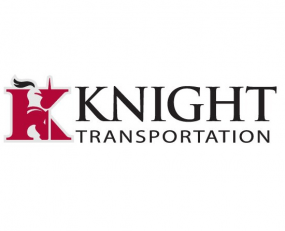
Phoenix-based Knight Transportation is feeling the pinch of a prolonged downturn for truckload carriers. It currently boasts a market cap of $2bn, which puts its shares on a trailing EV/sales multiple of 1.8x, based on about $1.2bn of revenues in 2015.
According to market consensus estimates, its stock is almost fully valued around the current level of $26 a share. However, its financial position remains solid, which gives it options with regard to capital allocation and extraordinary corporate activity at a time when Knight is carefully managing costs and working capital.
That said, its equity value didn’t benefit from a recent trading update, which was released on 20 April.
Growth was nowhere to be seen in the three months ending 31 March, with gross revenues down 6.3% to $272m. Excluding trucking fuel surcharges, net sales dropped 1.4% to $253m, while its operating performance was even worse than the top-line figures suggest; EBIT plunged 16.4% to $38.7m in the first quarter, with net earnings down 23.7% to $22.5m year-on-year.
Diluted earnings per share (EPS) came in at $0.28, down 22% year-on-year due to a $1.9m pre-tax loss from sourcing activities and $1m tax charges, which combined to negatively impact quarterly results by about $0.03 per diluted share. Those charges came on top of “less gain on sale of revenue equipment” as well as increased net fuel cost, which hit EPS by $0.04.
In fairness, it is not business as usual at Knight, but its balance sheet is properly capitalised and allows it to withstand the vagaries of the economy while safely deploying capital if any suitable opportunities arise. Its cash flow from operations rose 15% to $67m on the back of careful working capital management – receivables are flat year-on-year at $131m, while payables rose to $24m from $15m.
“Driver pay continues to be inflationary when compared to the same quarter last year, but was partially offset by our cost control efforts in operations and maintenance,” President and Chief Executive Dave Jackson noted.
“The freight environment was less attractive in the first quarter of 2016 compared with the same quarter a year ago. We attribute the change to excess trucking capacity, higher inventory ratios, and weak US industrial production for the full quarter of this year,” he said, adding that freight volumes and revenue per loaded mile remained relatively stable compared to the first quarter in 2015, while opportunities in the “non-contract market were challenged by falling load counts and additional price competition, particularly from non-asset brokers.”
As a result, pressure is building on revenue per loaded mile, but given “significantly declining new truck orders, the recent expansion of industrial production in March, and increased regulatory burdens expected to phase in over the next several quarters, we currently expect an improved environment later in the year”.
Knight operates trucking and logistics operations, with the former representing almost 80% of the group’s total revenues.
Source: Transport Intelligence, 1st June 2016
Author: Alessandro Pasetti